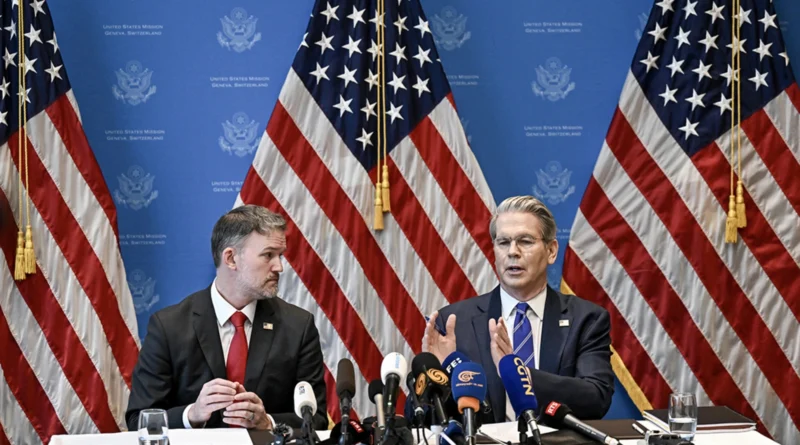Trade Tensions Escalate Between U.S. and China Amid Tech Industry Dispute
The Chinese government expressed opposition to the U.S., arguing that the latter seemingly attempts to stifle China’s growth within its advanced tech industry. This was formally voiced by the Chinese Ministry of Commerce on a recent Saturday statement. It argued that the United States has imposed several regulatory constraints on China’s semiconductor manufacturing sector over the past years. According to the ministry’s view, such actions not only hinder China’s aspirations for development but notably dents the stability of the worldwide production and distribution network within the semiconductor industry.
The Chinese Ministry of Commerce also announced during that Saturday that it had begun investigations targeted at anti-dumping, focusing on specific analog integrated circuits imported from the United States. It was asserted that this scrutiny aims to wrap by September 13, 2026. It’s worth noting that these remarks and initiatives by Chinese authorities were intimated at the brink of the impending China-US discussions in Spain. The core purpose for these talks, scheduled for September 14 through 17, is to deliberate on trade, tariffs, and aspects of the TikTok platform.
Details emerged that Chinese Vice Premier He Lifeng is poised to head the delegation from China. These discussions come at a critical juncture as China and the United States are essentially locked in an ongoing trade conflict. This tense atmosphere was largely sparked off when a blanket 10% tariff was implemented on all Chinese imports by US President Donald Trump earlier in the year around February.
The tariff situation subsequently escalated in the month following, with the rate of tariffs escalating up to as much as 20%. This led to a series of tit-for-tat maneuvers from both countries, resulting in the US tariff rate for Chinese goods rocketing to a staggering 145%. Meanwhile, American suppliers in China were slapped with hefty tariffs reaching a peak rate of 125%. This stress-building tariff war created a tense economic battleground for both countries involved.
In response to these escalating tensions, both nations agreed to a temporary tariff ceasefire. The agreement involved a roll-back of respective tariffs to a much more manageable 10% level. This interim measure spanned a period of 90 days and was kicked off from May 14. Nonetheless, this marked just a small step towards deescalating the overall brewing tension in their trade relationship.
Indeed, in adherence to the agreement, China placed a 10% tariff on imports originating from the United States. In a natural reciprocation, the US imposed a 30% tariff on goods produced in China. However, a specific 20% duty remained imposed on ‘fentanyl’, reflecting the complexities and specificities involved in the tariff calculations.
The ongoing trade tensions have underscored the major ideological differences between the two powerhouse nations. It highlights, more than ever, their struggle to find common ground on trade, tariffs, and technological policies. Amid such profound disagreements, the hope is that these dialogues will foster collaboration, mutual understanding, and respect for international norms.
Significantly, the scrutiny and subsequent anti-dumping investigation into American-made integrated circuits is an essential factor in this complex narrative. This move will undoubtedly set the tone for future trade dialogues and strategic initiatives between the two nations. Whether this investigation leads to even stricter countermeasures is left to be seen.
Another crucial layer to the situation is China’s firm stance against the strategic stifling of their semiconductor industry’s development. This evolution is key to the country’s domestic growth plans and pioneering technological ambitions. It thus appears adamant in making its stand clear and to defend its rights to development in the global high-tech sectors.
The consequences of the ongoing trade war are indeed far-reaching, impacting global supply chains, market stability, and economic growth. While both nations are seeking to protect their industries and economies, the resulting instability threatens the health of the global economy at large. It indeed raises questions about the nature of the world’s future economic landscape.
The scope of these intense trade disputes extends far beyond just the two nations. Their fallout has undeniably produced significant repercussions, affecting global markets and worldwide economic health. These range from uncertainties in the business environment and investment prospects, to volatility in financial markets.
As mutual tariff battles ensue, the strategies and tactics used by both the US and China will have longstanding implications for international trade norms. Policy experts and economists worldwide are monitoring these developments closely. Their outcomes will shape the course of global trade practices and guide policy directions of nations worldwide.
The recent talks involving trade, tariffs and the TikTok platform seem to indicate a willingness from both sides to negotiate and navigate the complex trade landscape. Such a dialogue could be a pivotal steppingstone towards mending the strained relationship between these two economic powerhouses. It is crucial to see if it results in relief from the unabating back-and-forth exchange of the soaring tariffs.
The role of the TikTok platform in these discussions also adds a unique facet to these talks. The social media giant’s future could be a salient indicator of the direction in which future U.S.-China tech relationships are likely to move. Analyzing the outcomes of these discussions will offer valuable foresight into the future of tech diplomacy between both nations.
The prominence of the highly-skilled Chinese Vice Premier He Lifeng in these negotiations also leaves a potential for significant policy discussions and decisions. His involvement could shape the talks’ direction and influence their conclusion profoundly. Moreover, his representation underscores China’s determination in voicing its concerns over trade practices.
The dicey matter of imposing tariffs, maintaining them, or rolling them back, forms a delicate balancing act for both nations. While it may serve as an impromptu remedy in the short term, a steady state resolution is much needed in the long term. Thinking on how these tariffs affect not just the national economy but the global market will be critical in determining future negotiations and policies.

